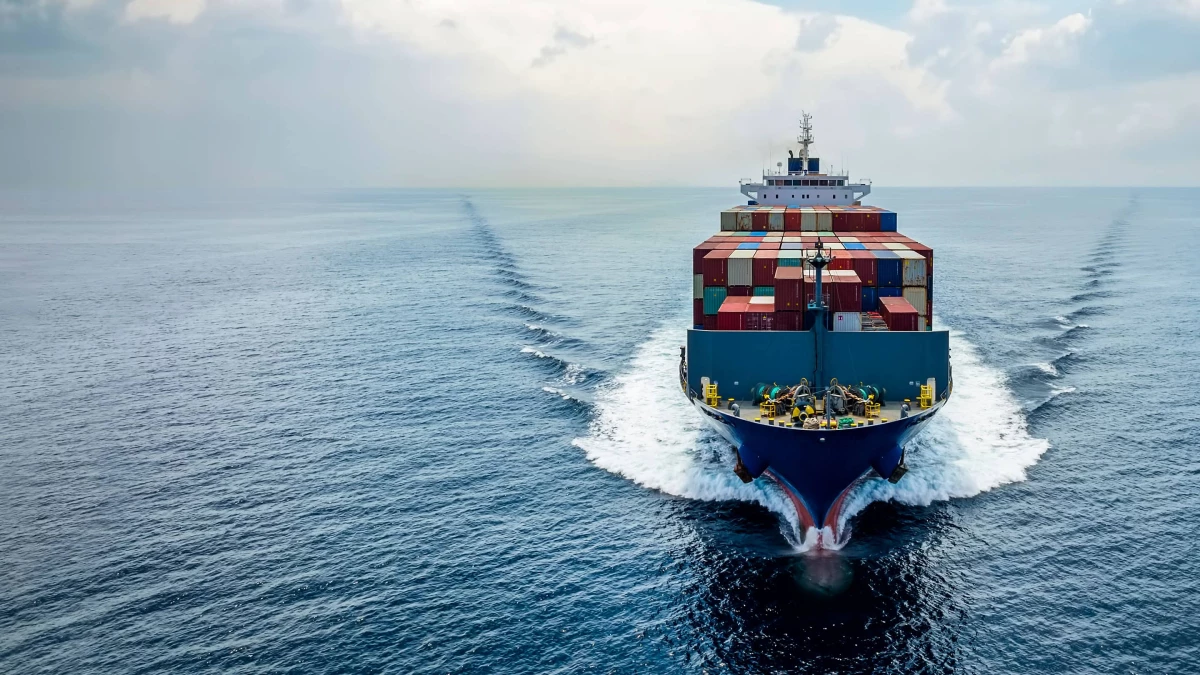The pressure to reduce emissions and meet stricter environmental regulations has led the maritime industry to rethink how vessels are maintained and operated. While much of the attention is on fuels, propulsion systems and emissions control technology, another important area is often overlooked: underwater services.

These services include hull cleaning, propeller polishing, underwater inspections and repairs carried out by divers or remote-operated systems. Though often seen as routine maintenance, they play a direct role in improving fuel efficiency, reducing emissions and extending the lifespan of vessels and components. In short, they form a key part of greener, more sustainable shipping.
Fuel Efficiency and Biofouling
One of the biggest contributors to excess fuel consumption at sea is biofouling. This is the accumulation of algae, barnacles and other marine organisms on a ship’s hull and propeller. Even a light layer can increase drag, forcing the engine to work harder and burn more fuel to maintain the same speed.
Underwater hull cleaning removes this build-up, improving hydrodynamic performance almost immediately. Propeller polishing offers similar benefits by smoothing out the surface, helping it spin more efficiently through water. These tasks might seem minor, but the impact is measurable. Studies have shown that cleaning a fouled hull can reduce fuel use by up to 10%, and in some cases even more, depending on the condition of the vessel.
Avoiding Dry Dock Emissions
Many underwater services are carried out while the vessel is still afloat. This allows operators to postpone or reduce the frequency of dry dock visits, which are resource-intensive and carbon-heavy. Moving a ship to dry dock, emptying ballast tanks and using high-powered pumps and machinery all generate emissions and consume large amounts of energy.
By performing inspections, repairs and maintenance underwater, ships can remain operational without the need for lengthy layups. In many cases, minor damage such as small cracks or worn coatings can be identified and repaired in situ, avoiding unnecessary downtime and additional fuel consumption during repositioning. This approach not only saves money and time but reduces the environmental footprint of maintenance itself. Fewer dry dock movements mean fewer tugs, support vessels and auxiliary services are needed—each one contributing to emissions if not avoided.
Protecting Marine Ecosystems
Responsible underwater maintenance is also important for controlling the spread of invasive species. Biofouling is one of the main ways non-native organisms travel from one region to another, attaching to hulls and finding new ecosystems when the ship docks in different waters.
Regular underwater hull cleaning helps reduce this risk, particularly when paired with proper anti-fouling coatings. However, it’s important that these services are carried out in line with environmental best practices. Some hull cleaning methods can dislodge harmful debris or remove paint, leading to contamination of the local marine environment.
That’s why many port authorities now require environmentally safe cleaning procedures. Water filtration systems and collection methods are used during underwater cleaning to capture debris and prevent pollutants from entering the sea. Well-trained divers and specialist equipment ensure cleaning is effective but does not disturb the ecosystem.
Supporting Emissions Monitoring and Compliance
Another way underwater services contribute to greener shipping is through their role in inspections. Many shipping companies are now required to report on fuel efficiency, emissions levels and maintenance history as part of regulatory frameworks like the Carbon Intensity Indicator (CII) and the Energy Efficiency Existing Ship Index (EEXI).
Underwater surveys, often conducted by ROVs (remotely operated vehicles), give ship operators and regulators a clear picture of hull condition, propeller wear and damage to coatings or fittings below the waterline. These inspections can help verify maintenance records, assess energy performance and guide decisions on route planning or refits.
With real-time visual data and accurate reporting, shipowners can take corrective actions sooner and show compliance more clearly. In the longer term, this supports fleet-wide improvements in fuel efficiency and environmental performance.
Prolonging Lifespan of Equipment
Greener shipping is not only about how a vessel operates but how long it lasts. The longer a component can stay in service without needing replacement, the lower its environmental cost over time. Every new part manufactured, transported and installed carries an embedded carbon footprint.
Underwater services help preserve critical infrastructure. Early detection of corrosion, cracks or misalignments gives engineers the opportunity to intervene before the damage becomes serious. Seals, rudders, thrusters and shafts can often be repaired or reinforced underwater, preventing larger repairs or replacement later on. This proactive approach to asset management reduces waste, saves materials and helps avoid unplanned outages. All of these factors support the industry’s broader shift towards circularity and more responsible resource use.
Integration with Broader Sustainability Strategies
Underwater services are increasingly being integrated into wider digital maintenance strategies. Many shipowners now use predictive analytics and condition monitoring to decide when to schedule hull cleaning or inspections. Sensors onboard track performance indicators such as increased fuel consumption or changes in speed, which can signal fouling or mechanical issues below the surface.
By linking underwater services with onboard data, operators can create more efficient maintenance schedules that respond to actual vessel condition rather than fixed timeframes. This reduces unnecessary work, lowers operational emissions and allows for smarter deployment of diving teams or robotic equipment.
These efficiencies are small in isolation but add up across large fleets. Over time, this data-led approach can help reduce emissions per voyage, improve long-term planning and contribute to cleaner, more efficient global shipping operations.
Final Thoughts
Underwater maintenance services are often viewed as technical or operational necessities, but they have a direct and important role to play in the push for greener shipping. From reducing fuel use and limiting invasive species to extending equipment life and cutting emissions during maintenance, the benefits are widespread.
In a sector where every operational decision has an environmental cost, taking care of what lies beneath the waterline is one of the simplest, most effective actions available. With better tools, trained teams and smarter data, underwater services are not just supporting shipping, they are helping to make it cleaner, more efficient and more sustainable for the future.


























